Understand the basics of the New Orleans piano tradition.
Chops: Intermediate
Theory: Intermediate
Lesson Overview:
• Understand the basics of the
New Orleans piano tradition.
• Develop bass lines using the
rumba rhythm.
• Create phrases inspired by both
the left- and right-hand techniques
of Professor Longhair.
As a guitar player, I’m always interested in finding ways to apply techniques to my instrument that come from places other than the guitar. Anyone who gets into playing jazz listens to—and hopefully transcribes— the solos of great horn players like Charlie Parker, Sonny Rollins, and Louis Armstrong. And sometimes guitarists will learn the right-hand lines of great pianists like Bud Powell or Wynton Kelly.
This is all great stuff. Learning to play single lines is a useful skill, and lots of fun too. But equally as fun is trying to assimilate piano techniques that emulate the left hand as well as the right. In my previous Premier Guitar lesson [“Exploring Stride Guitar,” May 2011], I talked about the stride piano tradition and how to apply that sound to the guitar. This time I want to stay with the piano, but turn our focus to the great players from New Orleans, particularly Professor Longhair.
In performing situations where there isn’t a piano player, especially in duos with singers or horn players, it’s fun to pull out a technique like this to spice things up and escape the tried-and-true methods of being an accompanist or solo guitarist. But even if you’re playing with a bassist, drummer, and piano player, try out some of this stuff on the next gig—you might like the results.
Now, back to the Professor. “Fess”, as he was known, was born in Bogalusa, Louisiana, in 1918 and became a major influence on everyone from James Booker to Fats Domino to Dr. John. He played with a raucous blues feel that often used a rumba groove for the bass line, shown in Fig. 1. Often, the bass would double it for extra kick.
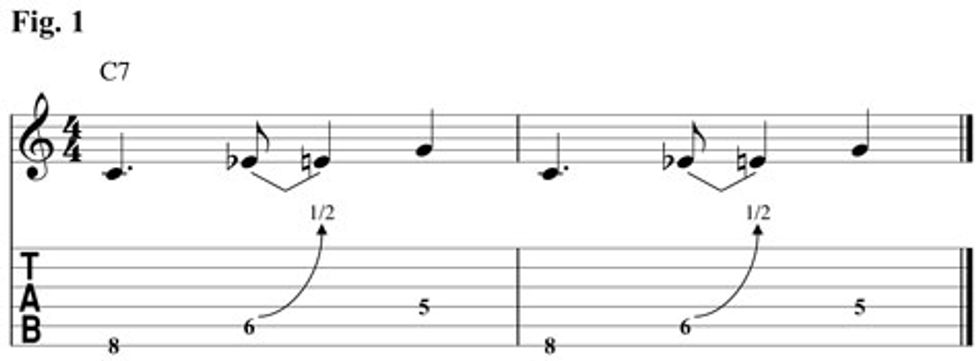
I’ve taken some ideas from Longhair’s style of playing and put it into a 12-bar blues in C. This isn’t an exact transcription of his work, but it does give the flavor of it by using a reverse-rolling fingerpicking pattern to get the Big Easy vibe. (Note: While it’s possible to use sweep picking to execute these examples, I highly recommend that you at least try it fingerstyle.) Fig. 2 starts with the bass line from Fig. 1 and adds some C7 chord tones, just to get the feel. To get the proper sound, it’s important to lay in heavily on the bass line while keeping the chords lighter. Once you feel comfortable with that, we can add the fancy breaks.
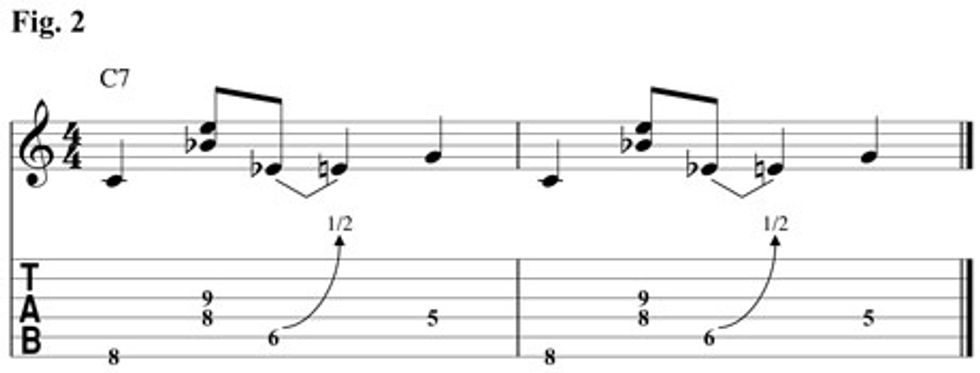
We’re going to use the same finger pattern each time, changing the chord that leads into each section of the blues form. You can see the three chords in Fig. 3. First up is a G7#5. This chord will lead us into the C7—the I chord. The second one is a C7#9 to take us into the F7 (the IV). And finally we’ll use a D7%9 to lead us into the G7 (the V). For a little extra flair, try sliding into each chord from a fret below.
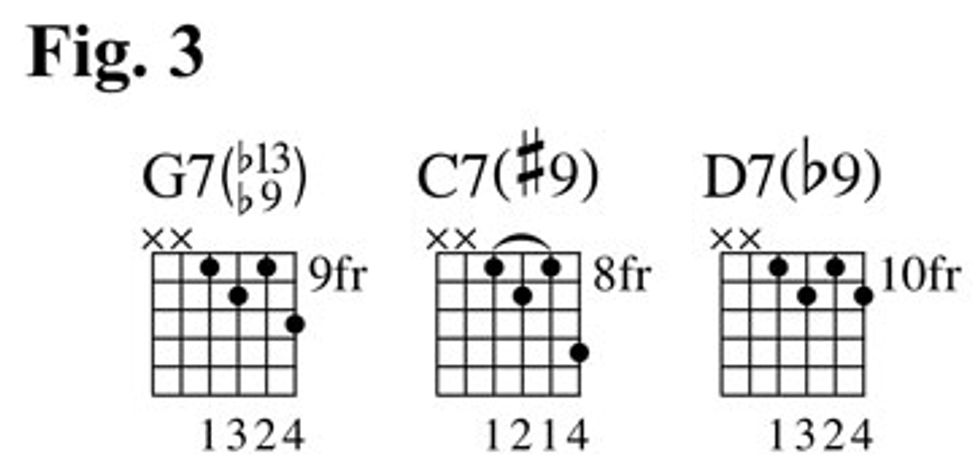
Now, let’s try and put them all together in Fig. 4. Once you get the feel for that, don’t be afraid to throw in some fills. Maybe something like you see in Fig. 5.
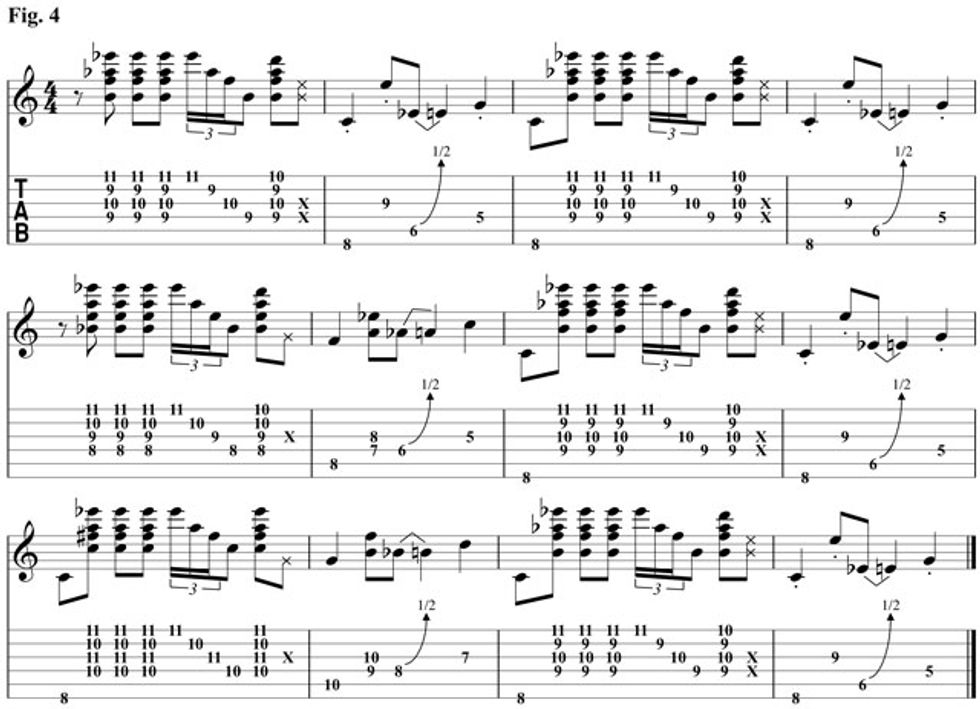
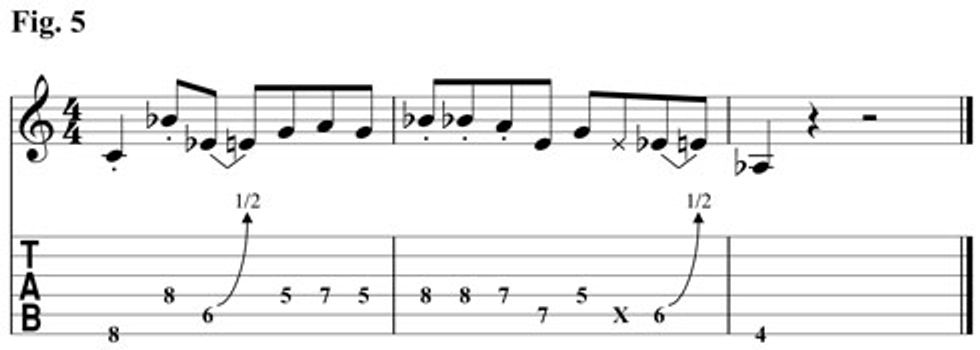
As with any music, just reading it off the page or hearing some examples is only the beginning. You have to immerse yourself in a style, using your ears to get it inside you the right way. And that, of course, takes time. But the rewards are many for those who choose to reap them! The music of New Orleans is really a world unto itself.
Down there you had the true blending of cultures, races, foods, styles, classes, and ideas. The rhythms of the Caribbean swam on up and met with the rustic integrity of the blues, with a bit of Westernized brass band music, ragtime, and piano classics mixed in for variety. New Orleans musicians took a piece of this tradition and molded themselves into it as best they could. I strongly encourage you to explore the New Orleans tradition from Jelly Roll Morton and Louis Armstrong and Sidney Bechet, to Professor Longhair and James Booker, on up to the Meters, Henry Butler, and the Neville Brothers.



